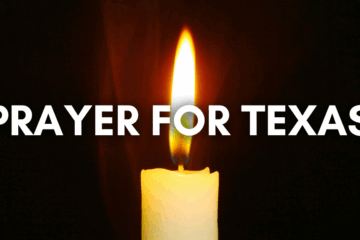Archbishop Anastasios of Tirana
‘Fear not’ (Matth. 28, 10)
‘Do not be afraid’, the angel of the Lord said to the myrrh-bearing women who had been overcome by fear and trembling at the empty tomb, ‘for I know that you are looking for Jesus, who was crucified. He is not here; he has risen, as he said’ (Matth. 28, 5-6). Shortly afterwards, the risen Christ himself said to them ‘Do not be afraid’. After this, he stressed to the circle of his downcast and frightened disciples: ‘Why are you troubled? And why do doubts arise in your hearts?’ (Luke 24, 38). He showed them the marks of the crucifixion on his hands and feet and thus confirmed, by his presence, the miraculous event of his Resurrection.
‘Do not fear’. Throughout the ages, the message of the Resurrection has proclaimed freedom from all causes of fear. Christ’s victory shattered the dominion of the demonic powers, bridged the gap between God and us and restored our relationship. The ontological significance of the Cross and Resurrection were revealed in his own unique way by Saint Paul. Jesus became human and accepted the Passion ‘so that through death he might destroy him who had the power of death, that is, the devil, and release those who through fear of death were all their lifetime subject to bondage’ (Heb. 2, 14-15). The risen Christ is ‘the beginning, the firstborn from the dead, so that in all things he may have the preeminence’ (Col. 1, 18). With Christ’s Resurrection, a new form of existence has begun for us. The confirmation of Christ’s Resurrection, the conviction that he’d been given ‘all authority in heaven and on earth’ (Matth. 28, 19) freed his disciples from every kind of fear and anxiety. And transformed them into bold and courageous preachers of the new life in Christ.
‘Do not be afraid’. Nowadays the fears threatening our life have multiplied considerably. Recently, these have been intensified by the more general consternation induced by the global economic crisis. New and old fears agitate our thoughts and crush our hearts. In this oppressive atmosphere, the feast of the Resurrection is an invitation to all the faithful to embark on a path of freedom from fear.
From the fear of those who are hostile towards us; from the fear caused by the injustice and cruelty of our society; from the fear of multi-faceted sin which infiltrates our being and sequesters it; from the fear of pain, penury, sickness, loneliness, of the dangers and sorrows that threaten our lives; from the fear of the pressing problems of everyday existence; from the fear of the unknown, of failure, of uncertainty over the future. And the culmination of the message of Christ’s Resurrection is freedom from the fear of death, our own and that of our loved ones, a fear that crushes human life. The feast of the Resurrection doesn’t merely proclaim the freedom bestowed upon us by Christ but it also invites us to share in that freedom.
Of course, this freedom is dependent upon faith. When the Church shouts aloud in praise ‘Christ has risen’ it doesn’t resort to arguments in order to impress the truth of what it’s declaring. As many as believe! ‘Happy are all those who believe…’. Provided, naturally, that we’re constant in the faith, well-grounded and firm: ‘and are not moved away from the hope of the gospel’ (Col. 1, 23).
Christ’s Resurrection dispels fear because it combines with an astonishing force and, especially on this brightest of feasts, we’re called upon to feel ‘what is the exceeding greatness of his [God’s] power… which he worked in Christ when he raised him from the dead and seated him at his right hand in heaven, above all principality and power and might and dominion, and every thing that belongs, not only in this world but also in that which is to come’ (Eph. 1, 19-21).
This freedom from fear, a gift from the risen Lord, should transform our attitude to life: ‘For you have been called to freedom’, though with the clear addition ‘only do not use freedom as an opportunity for the flesh, but, through love, to serve one another’ (Gal. 5, 13).
With his sacrifice on the Cross and the victory of the Resurrection, Christ, the incarnate hypostasis of God’s love, proclaimed the unique power of love, which liberates us from every form of fear. Those who are united to him in faith and love are able to experience the truth revealed by Saint John the Evangelist: ‘There is no fear in love; but perfect love casts out fear, because fear involves torment. But those who fear have not been made perfect in love’ (1 Jn. 4, 18).
My brothers and sisters, at this time in particular let us enjoy the freedom from every form of fear, deepening our faith in and love for the victor over death and Lord of our life. And let us remind our frightened brethren that ‘Christ has risen!’.
Source: pemptousia.com




0 Comments